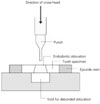1. Grossman LI, Oliet S, Del Rio CE. Endodontic Practice. 11th edn. Philadelphia: Lea & Febiger;255.
2. Tagger M, Tagger E, Tjan AH, Bakland LK. Measurement of adhesion of endodontic sealers to dentin. J Endod. 2002. 28:351–354.

3. Ørstavik D, Eriksen HM, Beyer-olsen EM. Adhesive properties and leakage of root canal sealers
in vitro. Int Endod J. 1983. 16:59–63.

4. Torabinejad M, Ung B, Kettering JD.
In vitro bacterial penetration of coronally unsealed endodontically treated teeth. J Endod. 1990. 16:566–569.

5. Shipper G, Ørstavik D, Teixeira FB, Trope M. An evaluation of microbial leakage in roots filled with a thermoplastic synthetic polymer-based root canal filling material (Resilon). J Endod. 2004. 30:342–347.

6. Tay FR, Loushine RJ, Weller RN, Kimbrough WF, Pashley DH, Mak YF, Lai CS, Raina R, Williams MC. Ultrastructural evaluation of the apical seal in roots filled with a polycaprolactone-based root canal filling material. J Endod. 2005. 31:514–519.

7. Teixeira FB, Teixeira EC, Thompson JY, Trope M. Fracture Resistance of endodontically treated roots using a new type of resin filling material. J Am Dent Assoc. 2004. 135:646–652.

8. Sly MM, Moore BK, Platt JA, Brown CE. Push-out Bond Strength of a New Endodontic Obturation System (Resilon/Epiphany). J Endod. 2007. 33:160–162.

9. Johnson WT, Gutmann JL. Cohen S, Hagreaves KM, editors. Obturation of the cleaned and shaped root canal system. Pathways of the pulp. 2006. 7th ed. St Louis: Mosby;368–369.

10. Branstetter J, von Fraunhofer JA. The physical properties and sealing action of endodontic sealer cements : a review. J Endod. 1982. 8:312–316.

11. Zmener O, Spielberg C, Lamberghini F, Rucci M. Sealing properties of a new epoxy resin-based root-canal sealer. Int Endod J. 1997. 30:332–334.

12. Wennber A, Ørstavik D. Adhesion of root canal sealers to bovine dentine and gutta-percha. Int Endod J. 1990. 23:13–19.

13. Teixeira FB, Teixeira EC, Thompson JY, Trope M. Fracture resistance of roots endodontically treated with a new resin filling material. J Am Dent Assoc. 2004. 135:646–652.

14. Gesi A, Raffaelli O, Goracci C, Pashley DH, Tay FR, Ferrari M. Interfacial strength of Resilon and guttapercha to intraradicular dentin. J Endod. 2005. 31:809–813.

15. Tay FR, Pashley DH, Williams MC, Raina R, Loushine RJ, Weller RN, Kimbrough WF, King NM. Susceptibility of a polycaprolactone-based root canal filling material to degradation. I. Alkaline hydrolysis. J Endod. 2005. 31:593–598.

16. Nikaido T, Takano Y, Sasafuchi Y, Burrow MF, Tagami J. Bond strengths to endodontically-treated teeth. Am J Dent. 1999. 12:177–180.
17. Ungor M, Onay EO, Orucoglu H. Push-out bond strengths: the Epiphany-Resilon endodontic obturation system compared with different pairings of Epiphany, Resilon, AH Plus and gutta-percha. Int Endod J. 2006. 39:643–647.

18. Sagsen B, Er O, Kahraman Y, Akdogan G. Resistance to fracture of roots filled with three different techniques. Int Endod J. 2007. 40:31–35.

19. Burtscher P. Stability of radicals in cured composite materials. Dent Mater. 1993. 9:218–221.

20. Skidmore LJ, Berzins DW, Bahcall JK. An
in vitro comparison of the intraradicular dentin bond strength of Resilon and gutta-percha. J Endod. 2006. 32:963–966.

21. Bouillaguet S, Troesch S, Wataha JC, Krejci I, Meyer JM, Pashley DH. Microtensile bond strength between adhesive cements and root canal dentin. Dent Mater. 2003. 19:199–205.

22. Ferracane JL. Developing a more complete understanding of stresses produced in dental composites during polymerization. Dent Mater. 2005. 21:36–42.

23. Alster D, Feilzer AJ, de Gee AJ, Davidson CL. Polymerization contraction stress in thin resin composite layers as a function of layer thickness. Dent Mater. 1997. 13:146–150.

24. Goldman M, Goldman LB, Cavaleri R, Bogis J, Lin PS. The efficacy of several endodontic irrigating solutions : a scanning electron microscopic study. part 2. J Endod. 1982. 8:487–492.

25. Baumgartner JC, Mader CL. A scanning electron microscopic evaluation of four root canal irrigation regimens. J Endod. 1987. 13:147–157.









 PDF
PDF ePub
ePub Citation
Citation Print
Print






 XML Download
XML Download